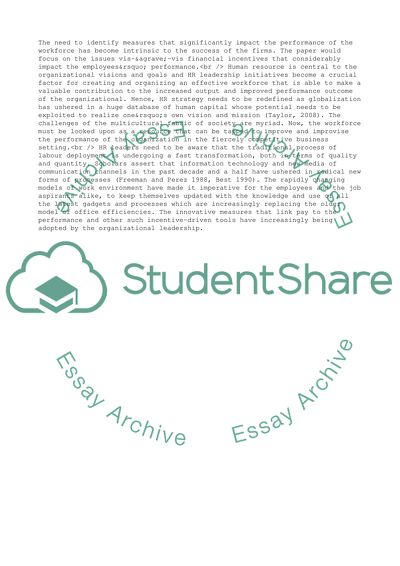Cite this document
(Forms of Financial Incentive Case Study Example | Topics and Well Written Essays - 2000 words, n.d.)
Forms of Financial Incentive Case Study Example | Topics and Well Written Essays - 2000 words. Retrieved from https://studentshare.org/management/1568947-how-might-performance-related-pay-prp-improve-performance-are-there-other-forms-of-financial-incentive-that-could-be-better-suited-to-the-task
Forms of Financial Incentive Case Study Example | Topics and Well Written Essays - 2000 words. Retrieved from https://studentshare.org/management/1568947-how-might-performance-related-pay-prp-improve-performance-are-there-other-forms-of-financial-incentive-that-could-be-better-suited-to-the-task
(Forms of Financial Incentive Case Study Example | Topics and Well Written Essays - 2000 Words)
Forms of Financial Incentive Case Study Example | Topics and Well Written Essays - 2000 Words. https://studentshare.org/management/1568947-how-might-performance-related-pay-prp-improve-performance-are-there-other-forms-of-financial-incentive-that-could-be-better-suited-to-the-task.
Forms of Financial Incentive Case Study Example | Topics and Well Written Essays - 2000 Words. https://studentshare.org/management/1568947-how-might-performance-related-pay-prp-improve-performance-are-there-other-forms-of-financial-incentive-that-could-be-better-suited-to-the-task.
“Forms of Financial Incentive Case Study Example | Topics and Well Written Essays - 2000 Words”. https://studentshare.org/management/1568947-how-might-performance-related-pay-prp-improve-performance-are-there-other-forms-of-financial-incentive-that-could-be-better-suited-to-the-task.


